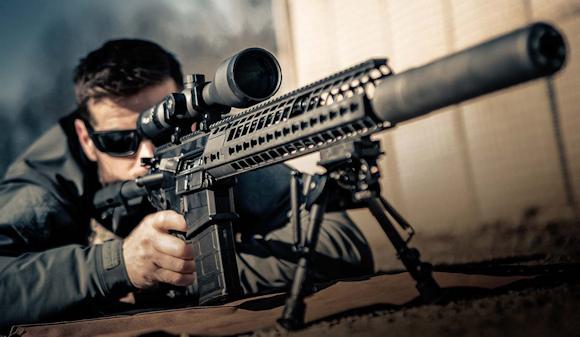In February, India signed a contract for the purchase of 72.400 Sig Sauer 716 G2 rifles (photo) in caliber 7,62x51 mm, as a partial substitute for the INSAS-made gun in national caliber 5,56x45 mm.
It is a semi-automatic version, Dmr (Designated marksman rifle), with an 16 inch barrel, gas regulation, two-stage match shooting and empty weight of 3,9 kg. Initially the new rifles will equip Indian troops deployed along the over 3.000 km of the Chinese border.
The great distances of that particular operational theater (characterized by numerous border clashes, little publicized) require the use of a higher caliber, compared to the 5,56x45 mm.
Precisely to equip the Army with the most suitable armament for the operational scenario, the Government of New Delhi acquired - in a limited number - other two rifles for long-range shooting: the Italian Victrix SCORPIO TGT in caliber .338 Lapua Magnum and the Barrett M-95 in 12,7x99 mm caliber.
Even in the West, however, the use of the 7,62x51 mm is beginning to be reconsidered, especially after the experiences gained in theaters such as Afghanistan and Iraq.
In this regard, the British Army conducted a series of technical and tactical tests, over a three-year period (2013-2016), about the use, by the infantry team, of the LMG (Light Machine Gun) Belgian MINIMI in caliber 5,56x45 mm.
From the tests carried out, it would appear that about the 70% of shots fired with the MINIMI (PARA version), at normal engagement distances, did not hit the target! Moreover, the dispersion of the fire was so important as to make the area saturation fire completely ineffective (to support these volumes of fire the infantry teams are forced to carry over 20 kg of ammunition 5,56x45 mm).

The missions in Afghanistan and Iraq - but also the most recent Syrian conflict - have highlighted how gunfights take place at medium / long distances, where the performance of weapons chambered with the 5,56x45 mm are heavily penalized.
Even the subsequent tests, with the long-barreled MINIMI, gave negative results. So the British Army decided last year to eliminate them from the infantry teams (currently the final confirmation by the General Staff is still missing).
Among the options evaluated is that of reintroducing, in place of MINIMI, the BREN submachine guns (L-4A3) in caliber 7,62x51 mm. Another proposal is to increase, in the infantry team, the number of semi-automatic rifles L-129A1 caliber 7,62x51 mm, in order to replace the saturation fire with the precision one.
The same considerations are being made by both the US Marine Corps - with the progressive replacement of the M-249 SAW - and the US Army with the launch of the NGSAR (Next Generation Squad Automatic Rifle) program, focused on the adoption of the new caliber 6,5 mm Creedmoor (v.articolo).
Photo: SIG SAUER / US Marine Corps












